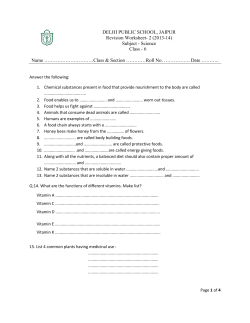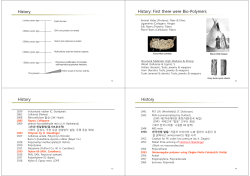
How to reduce emissions most effectively? COHIBA Final Conference October 11-12
How to reduce emissions most effectively? COHIBA Final Conference October 11-12th, 2011 Cindy Mathan, UBA and WP5 partners Goals of COHIBA WP 5 • …to find cost effective measures to reduce discharges, emissions and losses of 11 hazardous substances in the Baltic Sea Region • WP5-lead: German environmental agency (with Fraunhofer-ISI) • with partners from 7 countries • …to produce guidance documents on 11 substances of concern • utilize available information from WFD implementation, HELCOM and EU projects and from work packages 3 and 4 • …to give recommandations on cost-effective reduction strategies • … to contribute to a knowledge base for decision making for a Baltic Sea with life undisturbed by hazardous substances What are possible measures? How to choose the right measures for the right sources? • Pragmatic approach for selection of measures focusing on largest reduction potential • Evaluation in terms of cost-effectiveness • Additional analysis environmental and economic effects • Results compiled in 11 specific COHIBA Guidance Documents and a Recommendation report Three important perspectives for WP5 Three perspectives … • Substance specific perspective Substance specific perspective • Cross cutting perspective across 11 hazardous substances • Regional/National perspective HS emission reduction strategies for Baltic Sea Area Cross cutting perspective across 11 HS Regional / National perspective Regulatory background and changing emission pattern • For most of the 11 HS existing use restrictions / bans on international and/or EU level • Change of emission pattern in recent years: • Reduced emission from large industrial point sources • Reduced total load to the environment Regulatory background and changing emission pattern • more complex emission pattern • Increasing relevance of non industrial emission sources / • urban stock / Urban waste water as sink Increasing proportion of long range transport but exact contribution still unclear • more complex selection of measures addressing multitude of sources Examples for insufficient regulations • • • • • • • Sediments and dredged material, Harbors (TBT) Car shredding facilities, electronic recycling (BDE) Paper and textile recycling (PFOS/PFOA, NP) Construction sites (HBCDD)* Fire fighting foam (PFOS/PFOA) Tyres (OP/OPE)* Dental amalgams (Hg)* • *Non regulated substances/uses Need of more data to assess importance of these sources Substance specific perspective • Identification of regulation gaps for some HS, e.g. exemptions for PFOA, decaBDE, MCCP, HBCDD • Additional regulations for substances emissions via imported product, e.g. total ban of NP/NPE, global ban of Endosulfan • Substitution is a cost-effective measure in several cases, e.g. NP/NPE, PFOS, and OP Substance specific perspective • Work towards international conventions for HS with long range transport as most important sources (e.g. HBCDD, PFAs) • Update of the BREF document in some cases • Public awareness campaigns But: Substance specific emission reduction measures are important but not sufficient Cross substance measures • Change in source pattern – Increasing importance of measures targeting emission from urban stock via municipal waste water, landfill leachate or urban run-off • Existing waste water treatment is not sufficient for many HS, esp. if UWWT or IPPC Directive not been fully implemented • Advanced municipal waste water treatment (e.g. Activated Carbon treatment) target various of the 11 HS simultaneously, as well as other substances Cross substance measures • Some End-of-Pipe-measures (e.g. advanced waste water • • treatment or sludge treatment) with cross substance effects can be cost-effective SME indirect dischargers need an appropriate waste water treatment according to BAT (e.g. targeting Hg emissions from dental clinics or Cd emissions from galvanic industries). Address informal pathways of emission from urban areas (e.g. wrongly connected pipes or burning of waste in backyards) Regional perspective • Consideration of different local boundary conditions • Regional differences in the political enforceability of measures (e.g. voluntary agreements, eco-labelling) • Regulatory measures in Russia are mostly made for acute toxic substances (BT criteria are less important) Thank you!
© Copyright 2025





















